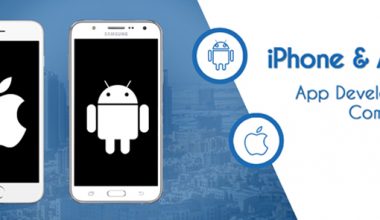You know your business needs a mobile presence, but how to best offer that experience — without breaking the bank — is something tons of companies, both big and small, continue to struggle with.
Carl asks: Is it worth it for me to have a mobile app (or should I just have a responsive site)? How do I know whether I’m getting bang for my buck?
If Carl had asked this question back in 2009 or 2010, it would have been phrased, “Do I need a native app or is a mobile-optimized website enough?” In 2011 and 2012, the question again would have shifted to “native app or mobile web app?” Today, “responsive” is the buzzword du jour.
As a result, it’s an increasingly popular option for companies that are looking to move into mobile, but that lack the budgets to support separate apps for each mobile platform and without the needs of something more complex such as a mobile web app.
The first thing you need to do is forget about buzzwords and lingo and focus on the actual needs of your business.
The first thing you need to do is forget about buzzwords and lingo and focus on the actual needs of your business.
App or Website
The basic question any business owner needs to ask himself is, “Do I need an app at all?” If you’re a law firm who primarily interacts via in-person consultations or over the phone, then no, you probably do not need a mobile app. The same is true for a restaurant owner with one or two locations.
Conversely, if you offer an existing web service for users logins and account management, a native mobile app is probably going to be a worthwhile investment, as it will provide tremendous performance benefits over using the mobile web.
Mobile Commerce as an Edge Case
There are, however, some edge cases in the app-versus-website debate. The most common to my mind is the area of commerce. Mobile commerce (mcommerce) is absolutely exploding, with more and more transactions taking place on tablets and smartphones every single day. In April, eMarketer predicted that by 2017, 25% of online retail transactions will take place on mobile.
Commerce is a tricky area for the mobile versus app debate
Commerce is a tricky area for the mobile versus app debate because the answer can really vary depending on the type of products being sold and the audience for the products.
I explored the mobile versus native debate in regards to ecommerce apps back in 2011. Although the shift to mobile shopping has greatly increased, the considerations for choosing mobile web (or in today’s parlance, “responsive”) over a native app are largely still the same.
I wrote then:
It isn’t just about choosing native apps or choosing the mobile web — it’s also about looking at who your customers are and what devices they use. For retailers that have lots of iPhone users, the fact that 50% of users can come from a native app and the conversion rate can be 30% higher makes a strong argument for creating a native app. Meanwhile, if conversion rates for native BlackBerry apps are subpar, it might make more sense to focus on optimizing the mobile commerce site to work with the BlackBerry browser.
This is all still true. Mcommerce companies should look at who their users are — what platforms they use, the average transaction price (studies continue to show that users feel more comfortable making large dollar purchases using a native app rather than the mobile web) and how well their current web solutions work with features such as shopping carts, time outs and more.
For mcommerce, you should absolutely start with a mobile friendly site and make sure that it is frequently updated to be fast, efficient and work well on multiple devices. Then, factor out how many sales will need to take place each month through a native app to pay for its development. If that seems feasible, building a native app to offer alongside the responsive experience is a great idea.
Responsive Is Not a Shortcut
On the surface, it’s easy to say that creating a responsive site will be less expensive than developing an app. Still, it’s important to consider the costs, especially if your existing site is not responsive.
These costs include not just the design itself, but also any upgrades that need to take place with your existing websites backend or infrastructure.
Responsive design is not just about fitting on a mobile screen
Responsive design is not just about fitting on a mobile screen, it’s also about making sure that functionality works in contexts and scenarios ideal for mobile.
That means that if you are a restaurant, your responsive site can hook into geolocation APIs to offer easy access to directions. It means that phone numbers are dial-able. It means that buttons and text entry fields are touch-friendly.



